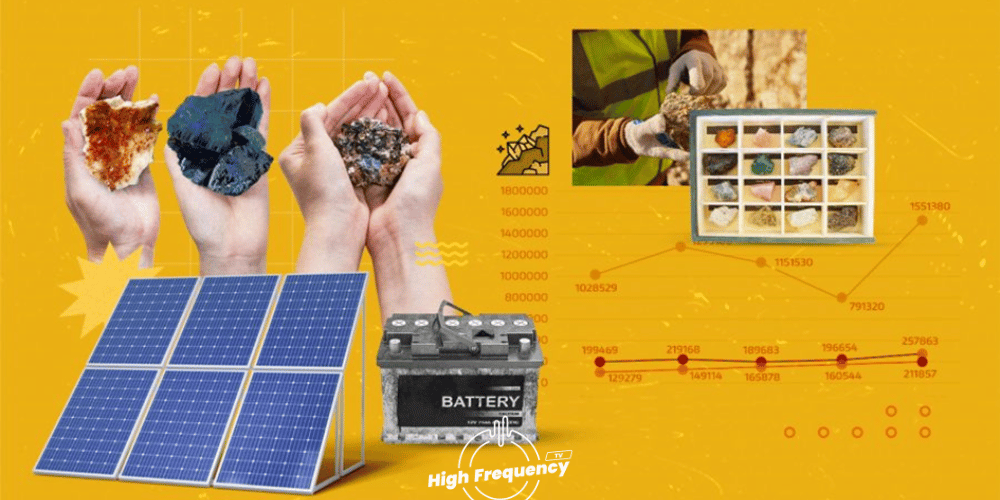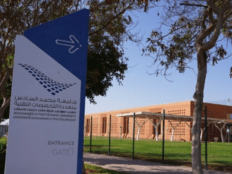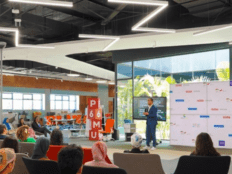Morocco, known for its abundant mineral wealth, harbors seven of the 24 critical minerals and metals that power industries worldwide—a breakthrough revealed by the Moroccan Economic, Social and Environmental Council (CESE).
These minerals can be used for the production of advanced technologies, including mobile phones, computers, fiber optic cables, semiconductors, banknotes, defense, aerospace, and medical applications.
What is important to know is that the country’s mineral wealth powers low-emission technologies, such as electric vehicles, wind turbines, solar panels, and rechargeable batteries.
Morocco’s abundant mineral wealth is crucial for achieving climate goals and transitioning away from fossil fuels. It fuels clean energy technologies like electric vehicles, wind turbines, and solar panels.
This makes these minerals essential components of a global clean energy strategy, with rapidly rising demand.
However, this shift to clean energy has a downside: electric vehicles and wind farms require significantly more minerals upfront.
For example, an electric car uses six times more minerals than a traditional car, and a wind farm needs nine times more than a gas-fired power plant of similar capacity.
“If these potential vulnerabilities are not addressed, global progress towards a clean energy future could be slower and more expensive, thereby hampering international efforts to tackle climate change,” said Dr. Fatih Birol, Executive Director of the International Energy Agency (IEA).
Research shows that the rise in low-carbon power generation is expected to triple the demand for minerals by 2040, with offshore wind leading the way. Solar PV and the expansion of electricity networks will also significantly increase the demand for critical minerals like copper and aluminum.
According to the IEA, the demand for these minerals is expected to be six times higher by 2050, with a market value of up to $400 billion. This surpasses the value of all globally mined coal in 2020.
The IRENA World Energy Transition Outlook 2023 shows that to achieve the 1.5°C target, renewable energy capacity must quadruple by 2030, and the number of electric vehicles must increase from 18 million in 2020 to 360 million in 2030.
To keep warming under a 2°C increase by 2050, we will need more than three billion tons of these vital energy transition minerals and metals to power wind, solar, and energy storage technologies.
Anticipating the rising need for critical minerals in climate action, the World Bank published a report in 2020 titled “Minerals for Climate Action: The Mineral Intensity of the Clean Energy Transition.”
In the REmap scenario, the report says the demand for aluminum, indium, and silver will increase by more than 300%, while copper, iron, lead, neodymium, and zinc are expected to rise by more than 200%.
Conversely, the most ambitious IEA scenario (B2DS) anticipates doubling the demand for more than five minerals by 2050 compared to the baseline scenario.
For example, looking at graphite, the demand is expected to rise by almost 500% from the 2018 production level, primarily due to its indispensable role in Li-ion batteries, widely used in cars, networks, and decentralized battery systems.
The report mentioned that by 2050, an estimated 4.5 million tons of graphite will be needed annually, amounting to a cumulative demand of 68 million tons.
Molybdenum, discovered in Morocco, offers another good example. This element is crucial for low-carbon technologies such as wind and geothermal energy.
In fact, wind turbines and geothermal systems account for 47.3% and 41.7% of the demand for molybdenum in electricity generation and storage, respectively.
Researchers said Morocco is well-positioned in terms of abundant critical mineral resources and technological expertise and can benefit from their current industrial capacity, skilled workforce, and growing experience in renewable energy.
By doing so, the Kingdom could become a regional leader in the production of solar panels and battery cells.
The country’s cobalt sector alone, supported by the 11th largest cobalt reserves in the world, is expected to attract interest from mining and automotive companies, strengthening the development of Morocco’s local EV supply chain from 2022 to 2026.
Moreover, domestic demand for solar panels and batteries in Morocco is expected to increase significantly due to ambitious 2030 goals, and leveraging these minerals could provide a crucial boost.
These minerals are essential for achieving sectoral goals and strategic choices to which Morocco has committed within the framework of the new development model and industrial policy:
It is fascinating to discover that Morocco has become a major player in the global market for critical minerals. The sad reality, however, is that most of Morocco’s minerals, except phosphates and cobalt, are exported in raw form, which is not in our best interest.
Similarly, Africa is rich in critical mineral reserves but lacks industries that add value through processing and refining. Although there is some capacity for certain minerals, significant steps in the value chain are still missing across the sector.
As a result, Africa primarily benefits from the extraction of minerals rather than the full potential of the critical minerals boom.
Processed minerals are generally more expensive than their raw forms. This is because processing transforms the raw material into a more usable form, enhancing physical or chemical properties for specific purposes.
Think of raw wood as the raw mineral. Processed wood, such as lumber or plywood, is more expensive because it has been cut, shaped, and made easier to use for construction projects. Of course, there are exceptions, but generally, this holds true for minerals and metals.
While processing raw materials within developing countries is often proposed to increase domestic value and employment, caution is advised against hasty investment decisions.
“Third World governments should not make hasty investment decisions in favor of processing raw materials, as the effects on the national economy in terms of the cost-benefit ratio may be more favorable in other branches of industry,” said Horst Habenicht, researcher and author of “Processing Mineral Raw Materials.”
The report warned that investments in developing countries to increase domestic value have not always been successful.
Even with functioning infrastructure and trained personnel, the added value through metallurgy per ton is often less than the investment costs. The returns on such investments can often be exceeded by other industries.
While exploiting these critical minerals offers exciting opportunities, it is important to highlight the multifaceted challenges involved. These challenges include environmental and social aspects.
Mismanagement can lead to adverse effects such as greenhouse gas emissions, loss of biodiversity, pollution, and human rights abuses, including child labor, as well as water depletion, land-use change, and resource pollution.
HESPRESS ENGLISH






Add comment